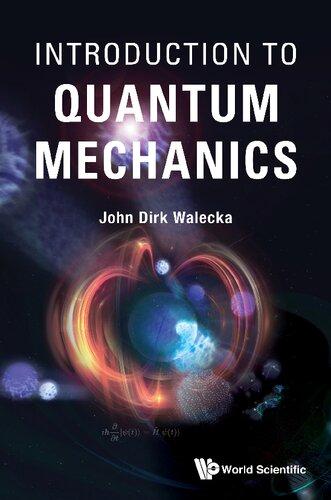Visit to download the full and correct content document: https://ebookmass.com/product/introduction-to-the-variational-formulation-in-mechani cs-edgardo-o-taroco/

More products digital (pdf, epub, mobi) instant download maybe you interests ...

Introduction to Fracture Mechanics Robert O. Ritchie
https://ebookmass.com/product/introduction-to-fracture-mechanicsrobert-o-ritchie/

eTextbook 978-1118763780 Introduction to Cosmetic Formulation and Technology
https://ebookmass.com/product/etextbook-978-1118763780introduction-to-cosmetic-formulation-and-technology/

Introduction to Quantum Mechanics John Dirk Walecka
https://ebookmass.com/product/introduction-to-quantum-mechanicsjohn-dirk-walecka/

Introduction to Engineering Fluid Mechanics 1st Edition
Marcel Escudier
https://ebookmass.com/product/introduction-to-engineering-fluidmechanics-1st-edition-marcel-escudier/

Work Organization in Practice: A Critical Introduction to
Work Organisation Models P-O Börnfelt
https://ebookmass.com/product/work-organization-in-practice-acritical-introduction-to-work-organisation-models-p-o-bornfelt/




PSYCHODYNAMIC FORMULATION
: an expanded approach. The psychodynamic formulation collective John Wiley
https://ebookmass.com/product/psychodynamic-formulation-anexpanded-approach-the-psychodynamic-formulation-collective-johnwiley/
Solutions Manual to Introduction to Robotics Mechanics and Control Third Edition John J. Craig
https://ebookmass.com/product/solutions-manual-to-introductionto-robotics-mechanics-and-control-third-edition-john-j-craig/
An Introduction to Statistical Mechanics and Thermodynamics 2nd Edition Robert H. Swendsen
https://ebookmass.com/product/an-introduction-to-statisticalmechanics-and-thermodynamics-2nd-edition-robert-h-swendsen/
Variational Calculus with Engineering Applications
Constantin Udriste
https://ebookmass.com/product/variational-calculus-withengineering-applications-constantin-udriste/
IntroductiontotheVariationalFormulationinMechanics
IntroductiontotheVariationalFormulation inMechanics
FundamentalsandApplications
EdgardoO.Taroco,PabloJ.BlancoandRaúlA.Feijóo
HeMoLab-HemodynamicsModeling Laboratory
LNCC/MCTIC-NationalLaboratoryfor ScientificComputing,Brazil
INCT-MACC-NationalInstituteofScience andTechnologyinMedicineAssistedby ScientificComputing,Brazil
Thiseditionfirstpublished2020
©2020JohnWiley&SonsLtd
Allrightsreserved.Nopartofthispublicationmaybereproduced,storedinaretrievalsystem,or transmitted,inanyformorbyanymeans,electronic,mechanical,photocopying,recordingorotherwise, exceptaspermittedbylaw.Adviceonhowtoobtainpermissiontoreusematerialfromthistitleisavailable athttp://www.wiley.com/go/permissions.
TherightofEdgardoO.Taroco,PabloJ.BlancoandRaúlA.Feijóotobeidentifiedastheauthorsofthiswork hasbeenassertedinaccordancewithlaw.
RegisteredOffices
JohnWiley&Sons,Inc.,111RiverStreet,Hoboken,NJ07030,USA
JohnWiley&SonsLtd,TheAtrium,SouthernGate,Chichester,WestSussex,PO198SQ,UK
EditorialOffice
JohnWiley&SonsLtd,TheAtrium,SouthernGate,Chichester,WestSussex,PO198SQ,UK
Fordetailsofourglobaleditorialoffices,customerservices,andmoreinformationaboutWileyproducts visitusatwww.wiley.com.
Wileyalsopublishesitsbooksinavarietyofelectronicformatsandbyprint-on-demand.Somecontentthat appearsinstandardprintversionsofthisbookmaynotbeavailableinotherformats.
LimitofLiability/DisclaimerofWarranty
Whilethepublisherandauthorshaveusedtheirbesteffortsinpreparingthiswork,theymakeno representationsorwarrantieswithrespecttotheaccuracyorcompletenessofthecontentsofthisworkand specificallydisclaimallwarranties,includingwithoutlimitationanyimpliedwarrantiesofmerchantabilityor fitnessforaparticularpurpose.Nowarrantymaybecreatedorextendedbysalesrepresentatives,written salesmaterialsorpromotionalstatementsforthiswork.Thefactthatanorganization,website,orproductis referredtointhisworkasacitationand/orpotentialsourceoffurtherinformationdoesnotmeanthatthe publisherandauthorsendorsetheinformationorservicestheorganization,website,orproductmayprovide orrecommendationsitmaymake.Thisworkissoldwiththeunderstandingthatthepublisherisnotengaged inrenderingprofessionalservices.Theadviceandstrategiescontainedhereinmaynotbesuitableforyour situation.Youshouldconsultwithaspecialistwhereappropriate.Further,readersshouldbeawarethat websiteslistedinthisworkmayhavechangedordisappearedbetweenwhenthisworkwaswrittenandwhen itisread.Neitherthepublishernorauthorsshallbeliableforanylossofprofitoranyothercommercial damages,includingbutnotlimitedtospecial,incidental,consequential,orotherdamages.
LibraryofCongressCataloging-in-Publicationdataappliedfor HBISBN:9781119600909
CoverDesignbyWiley
CoverImages:©SandipkumarPatel/GettyImages,©PabloJavierBlanco
Setin10/12ptWarnockbySPiGlobal,Pondicherry,India
PrintedandboundbyCPIGroup(UK)Ltd,Croydon,CR04YY
10987654321
Toourfamilies
Contents
Preface xv
PartIVectorandTensorAlgebraandAnalysis 1
1VectorandTensorAlgebra 3
1.1PointsandVectors 3
1.2Second-OrderTensors 6
1.3Third-OrderTensors 17
1.4ComplementaryReading 22
2VectorandTensorAnalysis 23
2.1Differentiation 23
2.2Gradient 28
2.3Divergence 30
2.4Curl 32
2.5Laplacian 34
2.6Integration 35
2.7Coordinates 38
2.8ComplementaryReading 45
PartIIVariationalFormulationsinMechanics 47
3MethodofVirtualPower 49
3.1Introduction 49
3.2Kinematics 50
3.2.1BodyandDeformations 50
3.2.2Motion:DeformationRate 55
3.2.3MotionActions:KinematicalConstraints 61
3.3DualityandVirtualPower 66
3.3.1MotionActionsandForces 67
3.3.2DeformationActionsandInternalStresses 69
3.3.3MechanicalModelsandtheEquilibriumOperator 71
viii Contents
3.4BodieswithoutConstraints 74
3.4.1PrincipleofVirtualPower 75
3.4.2PrincipleofComplementaryVirtualPower 80
3.5BodieswithBilateralConstraints 81
3.5.1PrincipleofVirtualPower 81
3.5.2PrincipleofComplementaryVirtualPower 86
3.6BodieswithUnilateralConstraints 87
3.6.1PrincipleofVirtualPower 89
3.6.2PrincipleofComplementaryVirtualPower 92
3.7LagrangianDescriptionofthePrincipleofVirtualPower 94
3.8ConfigurationswithPreloadandResidualStresses 97
3.9LinearizationofthePrincipleofVirtualPower 100
3.9.1PreliminaryResults 101
3.9.2KnownSpatialConfiguration 102
3.9.3KnownMaterialConfiguration 102
3.10InfinitesimalDeformationsandSmallDisplacements 103
3.10.1BilateralConstraints 104
3.10.2UnilateralConstraints 105
3.11FinalRemarks 106
3.12ComplementaryReading 107
4HyperelasticMaterialsatInfinitesimalStrains 109
4.1Introduction 109
4.2UniaxialHyperelasticBehavior 109
4.3Three-DimensionalHyperelasticConstitutiveLaws 113
4.4EquilibriuminBodieswithoutConstraints 116
4.4.1PrincipleofVirtualWork 117
4.4.2PrincipleofMinimumTotalPotentialEnergy 117
4.4.3LocalEquationsandBoundaryConditions 118
4.4.4PrincipleofComplementaryVirtualWork 120
4.4.5PrincipleofMinimumComplementaryEnergy 121
4.4.6AdditionalRemarks 122
4.5EquilibriuminBodieswithBilateralConstraints 123
4.5.1PrincipleofVirtualWork 125
4.5.2PrincipleofMinimumTotalPotentialEnergy 125
4.5.3PrincipleofComplementaryVirtualWork 126
4.5.4PrincipleofMinimumComplementaryEnergy 127
4.6EquilibriuminBodieswithUnilateralConstraints 128
4.6.1PrincipleofVirtualWork 128
4.6.2PrincipleofMinimumTotalPotentialEnergy 128
4.6.3PrincipleofComplementaryVirtualWork 129
4.6.4PrincipleofMinimumComplementaryEnergy 130
4.7Min–MaxPrinciple 131
4.7.1Hellinger–ReissnerFunctional 131
4.7.2Hellinger–ReissnerPrinciple 133
4.8Three-FieldFunctional 134
4.9CastiglianoTheorems 136
4.9.1FirstandSecondTheorems 136
4.9.2BoundsforDisplacementsandGeneralizedLoads 139
4.10ElastodynamicsProblem 144
4.11ApproximateSolutiontoVariationalProblems 148
4.11.1ElastostaticsProblem 148
4.11.2Hellinger–ReissnerPrinciple 154
4.11.3GeneralizedVariationalPrinciple 156
4.11.4ContactProblemsinElastostatics 158
4.12ComplementaryReading 162
5MaterialsExhibitingCreep 165
5.1Introduction 165
5.2PhenomenologicalAspectsofCreepinMetals 165
5.3InfluenceofTemperature 168
5.4Recovery,Relaxation,CyclicLoading,andFatigue 170
5.5UniaxialConstitutiveEquations 173
5.6Three-DimensionalConstitutiveEquations 182
5.7GeneralizationoftheConstitutiveLaw 188
5.8ConstitutiveEquationsforStructuralComponents 191
5.8.1BendingofBeams 192
5.8.2Bending,Extension,andCompressionofBeams 195
5.9EquilibriumProblemforSteady-StateCreep 199
5.9.1MechanicalEquilibrium 199
5.9.2VariationalFormulation 201
5.9.3VariationalPrinciplesofMinimum 205
5.10CastiglianoTheorems 209
5.10.1FirstandSecondTheorems 209
5.10.2BoundsforVelocitiesandGeneralizedLoads 211
5.11ExamplesofApplication 214
5.11.1DiskRotatingwithConstantAngularVelocity 214
5.11.2CantileveredBeamwithUniformLoad 217
5.12ApproximateSolutiontoSteady-StateCreepProblems 219
5.13UnsteadyCreepProblem 225
5.14ApproximateSolutionstoUnsteadyCreepFormulations 227
5.15ComplementaryReading 228
6MaterialsExhibitingPlasticity 229
6.1Introduction 229
6.2Elasto-PlasticMaterials 229
6.3UniaxialElasto-PlasticModel 235
6.3.1ElasticRelation 235
6.3.2YieldCriterion 236
6.3.3HardeningLaw 238
6.3.4PlasticFlowRule 240
6.4Three-DimensionalElasto-PlasticModel 243
6.4.1ElasticRelation 244
x Contents
6.4.2YieldCriterionandHardeningLaw 246
6.4.3PotentialPlasticFlow 249
6.5DruckerandHillPostulates 253
6.6Convexity,Normality,andPlasticPotential 255
6.6.1NormalityLawandaRationaleforthePotentialLaw 255
6.6.2ConvexityoftheAdmissibleRegion 257
6.7PlasticFlowRule 258
6.8InternalDissipation 260
6.9CommonYieldFunctions 262
6.9.1ThevonMisesCriterion 263
6.9.2TheTrescaCriterion 264
6.10CommonHardeningLaws 266
6.11IncrementalVariationalPrinciples 267
6.11.1PrincipleofMinimumfortheVelocity 268
6.11.2PrincipleofMinimumfortheStressRate 269
6.11.3UniquenessoftheStressField 270
6.11.4VariationalInequalityfortheStress 270
6.11.5PrincipleofMinimumwithTwoFields 271
6.12IncrementalConstitutiveEquations 272
6.12.1ConstitutiveEquationsforRates 273
6.12.2ConstitutiveEquationsforIncrements 275
6.12.3VariationalPrincipleinFiniteIncrements 278
6.13ComplementaryReading 279
PartIIIModelingofStructuralComponents 281
7BendingofBeams 285
7.1Introduction 285
7.2Kinematics 285
7.3GeneralizedForces 289
7.4MechanicalEquilibrium 290
7.5TimoshenkoBeamModel 294
7.6FinalRemarks 298
8TorsionofBars 301
8.1Introduction 301
8.2Kinematics 301
8.3GeneralizedForces 304
8.4MechanicalEquilibrium 305
8.5DualFormulation 309
9PlatesandShells 315
9.1Introduction 315
9.2GeometricDescription 316
9.3DifferentiationandIntegration 320
9.4PrincipleofVirtualPower 323
9.5UnifiedFrameworkforShellModels 326
9.6ClassicalShellModels 332
9.6.1NaghdiModel 332
9.6.2Kirchhoff–LoveModel 335
9.6.3LoveModel 340
9.6.4KoiterModel 342
9.6.5SandersModel 344
9.6.6Donnell–Mushtari–VlasovModel 346
9.7ConstitutiveEquationsandInternalConstraints 347
9.7.1PreliminaryConcepts 348
9.7.2ModelwithNaghdiHypothesis 350
9.7.3ModelwithKirchhoff–LoveHypothesis 357
9.8CharacteristicsofShellModels 360
9.8.1RelationBetweenGeneralizedStresses 360
9.8.2EquilibriumAroundtheNormal 361
9.8.2.1Kirchhoff–LoveModel 361
9.8.2.2LoveModel 362
9.8.2.3KoiterModel 363
9.8.2.4SandersModel 363
9.8.3ReactiveGeneralizedStresses 364
9.8.3.1ReactionsintheNaghdiModel 364
9.8.3.2ReactionsintheKirchhoff–LoveModel 366
9.9BasicsNotionsofSurfaces 369
9.9.1Preliminaries 369
9.9.2FirstFundamentalForm 370
9.9.3SecondFundamentalForm 372
9.9.4ThirdFundamentalForm 375
9.9.5ComplementaryProperties 375
PartIVOtherProblemsinPhysics 377
10HeatTransfer 379
10.1Introduction 379
10.2Kinematics 379
10.3PrincipleofThermalVirtualPower 381
10.4PrincipleofComplementaryThermalVirtualPower 386
10.5ConstitutiveEquations 388
10.6PrincipleofMinimumTotalThermalEnergy 390
10.7PoissonandLaplaceEquations 390
11IncompressibleFluidFlow 393
11.1Introduction 393
11.2Kinematics 394
11.3PrincipleofVirtualPower 396
xii Contents
11.4Navier–StokesEquations 403
11.5StokesFlow 405
11.6IrrotationalFlow 407
12High-OrderContinua 411
12.1Introduction 411
12.2Kinematics 412
12.3PrincipleofVirtualPower 418
12.4Dynamics 425
12.5MicropolarMedia 427
12.6SecondGradientTheory 429
PartVMultiscaleModeling 435
13MethodofMultiscaleVirtualPower 439
13.1Introduction 439
13.2MethodofVirtualPower 439
13.2.1Kinematics 439
13.2.2Duality 442
13.2.3PrincipleofVirtualPower 445
13.2.4EquilibriumProblem 446
13.3FundamentalsoftheMultiscaleTheory 447
13.4KinematicalAdmissibilitybetweenScales 449
13.4.1MacroscaleKinematics 449
13.4.2MicroscaleKinematics 451
13.4.3InsertionOperators 453
13.4.4HomogenizationOperators 456
13.4.5KinematicalAdmissibility 458
13.5DualityinMultiscaleModeling 462
13.5.1MacroscaleVirtualPower 462
13.5.2MicroscaleVirtualPower 464
13.6PrincipleofMultiscaleVirtualPower 467
13.7DualOperators 468
13.7.1MicroscaleEquilibrium 468
13.7.2HomogenizationofGeneralizedStresses 470
13.7.3HomogenizationofGeneralizedForces 472
13.8FinalRemarks 473
14ApplicationsofMultiscaleModeling 475
14.1Introduction 475
14.2SolidMechanicswithExternalForces 475
14.2.1MultiscaleKinematics 476
14.2.2CharacterizationofVirtualPower 479
14.2.3PrincipleofMultiscaleVirtualPower 480
14.2.4EquilibriumProblemandHomogenization 482
14.2.5TangentOperators 487
14.3MechanicsofIncompressibleSolidMedia 490
14.3.1PrincipleofVirtualPower 491
14.3.2MultiscaleKinematics 493
14.3.3PrincipleofMultiscaleVirtualPower 495
14.3.4IncompressibilityandMaterialConfiguration 497
14.4FinalRemarks 500
PartVIAppendices 501
ADefinitionsandNotations 503
A.1Introduction 503
A.2Sets 503
A.3FunctionsandTransformations 504
A.4Groups 507
A.5Morphisms 509
A.6VectorSpaces 509
A.7SetsandDependenceinVectorSpaces 512
A.8BasesandDimension 513
A.9Components 514
A.10SumofSetsandSubspaces 516
A.11LinearManifolds 516
A.12ConvexSetsandCones 516
A.13DirectSumofSubspaces 517
A.14LinearTransformations 517
A.15CanonicalIsomorphism 522
A.16AlgebraicDualSpace 523
A.16.1OrthogonalComplement 524
A.16.2PositiveandNegativeConjugateCones 525
A.17Algebrain V526
A.18AdjointOperators 528
A.19TranspositionandBilinearFunctions 529
A.20InnerProductSpaces 532
BElementsofRealandFunctionalAnalysis 539
B.1Introduction 539
B.2Sequences 541
B.3LimitandContinuityofFunctions 542
B.4MetricSpaces 544
B.5NormedSpaces 546
B.6QuotientSpace 549
B.7LinearTransformationsinNormedSpaces 550
B.8TopologicalDualSpace 552
B.9WeakandStrongConvergence 553
xiv Contents
CFunctionalsandtheGâteauxDerivative 555
C.1Introduction 555
C.2PropertiesofOperator �� 555
C.3ConvexityandSemi-Continuity 556
C.4GâteauxDifferential 557
C.5MinimizationofConvexFunctionals 557
References 559 Index 575
Preface
Thisbookwaswrittenintermittentlyovertheperiodbetween1980and2016withan aimtoprovidestudentsattendingthecoursesorganizedbytheauthors,particularly forthegraduatestudentsattheNationalLaboratoryforScientificComputing(LNCC), withthefoundationalmaterialofMechanicsusingavariationaltapestry.Itistheresult oftheknowledgeacquiredanddivulgedbyE.O.TandR.A.F.sincetheLNCCwasestablished,whichwasinitiatedwiththecreationoftheLaboratoryofComputing(LAC)of theBrazilianCenterforResearchinPhysics(CBPF)in1977,throughthefoundationof theLaboratoryforScientificComputing(LCC)in1980,itsconversionintothecategory ofanationallaboratory(LNCC)in1982andthedefinitivemovetothecityofPetrópolis in1998.
Partofthematerialpresentedherewasusedinvariouscoursesoftheoreticaland appliedmechanicsorganizedbyE.O.T.andR.A.F.Thesecoursewere
• 1stCourseonTheoreticalandAppliedMechanics:TheoryofShellsandtheirApplicationsinEngineering(ModuleI–BasicPrinciples,July5to30,1982;ModuleII–MechanicalModels,January3toFebruary11,1983;andModuleIII–Instabilityof Shells,July4to30,1983).
• 2ndCourseonTheoreticalandAppliedMechanics:FundamentalsoftheFiniteElementMethodanditsApplicationsinEngineering(ModuleI–Fundamentalsofthe FiniteElementMethod,July2to27,1984;ModuleII–ApplicationsoftheFinite ElementMethodinSolidMechanics,January7toFebruary1,1985,ModuleIII–ModernAspectsoftheFiniteElementMethod,July1to26,1985).
• 3rdCourseonTheoreticalandAppliedMechanics:Optimization:Fundamentalsand ApplicationsinEngineering(ModuleI–OptimizationintheModelingandAnalysisofEngineeringProblems,July7toAugust1,1986;ModuleII–OptimalDesign: FoundationsandApplications,July6to31,1987).
Unfortunately,andlargelyduetothelongperiodoftimethatthisdocumenttookto befinished,oneoftheauthors,Prof.EdgardoO.Taroco,leftus(passedawayinJanuary 2010).Nevertheless,wedecidedtokeephisnameamongtheauthorsasanacknowledgementtohisdeepcontributionsandinhonortohismemory,aswellastothefriendship andgenerositythathealwaysofferedusthroughoutalltheseyears.Therefore,allerrors (ofanykind)arethesoleresponsibilityofP.J.B.andR.A.F. PartofthismaterialwasusedbyR.A.F.inthecoursedictatedduringthePost-Doctoral LatinAmericanSeminaronContinuumMechanicsandMicrostructure,organizedby theNationalAtomicEnergyCommissioninArgentina,sponsoredbytheOrganization
xvi Preface
ofAmericanStates(OAS),andheldinBuenosAires,July-August1984.Itwasonlyafter 1998thattheLNCCwasmovedtoPetrópolis,andtheLNCCGraduateProgramwas initiated.Then,wedecidedtoconsolidatetheaforementionedtextsintoamonograph thatwouldgiveemphasistotheformulationofthemechanicswithinapurelyvariational structure.Morerecently,sinceP.J.B.joinedtheLNCCin2009,theideaoffinishingthis document,alsoincludingtopicsinotherareasofphysicsaswellastheextensionofthe variationalframeworktoamulti-scaleparadigm,resurfaced.Currently,thismaterialis beingusedinseveralcoursesinthegraduateprograminComputationalModelingat LNCC,Brazil,andalsointhegraduateprograminMechanicalEngineeringatNational UniversityofMardelPlata,Argentina.
Suchvariationalframeworkusedtopresentthemechanicswaschosennotonly forbeingoneofourmainareasofresearch,butalso,andfundamentally,becausewe stronglybelievethatthiswayoflookingintotherootsofmechanicsisthemostsuitable andconvenientperspectivetoapproachthemathematicalmodeling.Infact,andasit willbecomeincreasinglyclearasweproceed,thefoundationalpillarsuponwhichthe wholemodelingjourneyrestsusingthisvariationaltapestryarethefollowing
• Thefirstpillarisrelatedtothedescriptionofthekinematics,thatistheformalization ofthekinematicalhypotheseswhichprovidesthedefinitionofthegeneralizedmotion actionsandadmissiblegeneralizedstrainrateactionsforthemodelunderstudy.
• Thesecondpillarconsistsofthemathematicaldualitypostulatedbetweenquantitiesrelatedtosuchmotionactionsandgeneralizedstrainrateswith,respectively, theexternalgeneralizedforcesandinternalgeneralizedstresses.Inthisway,forces andstressesareconstructsfullyshapedbylinearcontinuousfunctionalswhoseargumentsarekinematicalentities.Thisaspectestablishesacleardifferencebetweenthe approachdevelopedinthisbookandtheprocedurefollowedbymostoftheliterature inthefieldofcontinuummechanics,whereforcesandstressesaremalleableentities introducedapriori,regardlessofthekinematicsdefinedforthephysicalsystem.
• ThethirdpillaristhePrincipleofVirtualPower(oritsgeneralization,thePrinciple ofMulti-scaleVirtualPowerinthecontextofmodelingproblemswithmorethan onescale).Thisprincipleallowstoestablish,forthephysicalsystemunderstudy,the conceptofmechanicalequilibriumbetweenexternalforcesandinternalstressesand, whenproperconstitutiverelationsaregiven,thisprinciplecharacterizesthegeneralizeddisplacementfieldforwhichtheassociatedgeneralizedstressstateequilibrates theexternalforces.
Thesethreepillarssupporttherealmofso-calledMethodofVirtualPower(MVP), whichestablisheswell-definedbasicstepstargetingafullyconsistentmodellingtechnique.Suchvariationalstructurewasproposed,althoughwithsubtlemodifications, byProf.PaulGermain[114–118].Particularly,Prof.Germain(lifetimememberofthe FrenchAcademyofScience)wasinvitedbyusin1982toteachthecourseFourLectures ontheFoundationofShellTheorywithinModuleIofthe1stCourseonTheoreticaland AppliedMechanicsthatweorganized,precisely,todisseminatetheseconceptsamong studentsandprofessorsfromdifferentLatinAmericancountries.Anotherprofessor whogreatlycontributedtoconsolidatethisapproachinthesecourseswasProf.Giovanni Romano(FacoltàdiIngegneriadell’UniversitàdegliStudidiNapoli,Italy). Theorganizationofthisbookcloselyfollowsthisspirit.InPartIwepresentthebasic conceptsofvectorandtensoralgebraandanalysis,wherethereaderisintroducedto
Preface xvii theubiquitoususeofcompactvectorandtensornotation.Thiscompactnotationallows togothroughthebasicprinciplesandconceptsofthemechanicsinaclearandconcise way,withoutbeingobscuredbythepresenceofindices,componentsandmetric-related entities,whichshouldberelegatedtotheirspecificroleatthetimeofthecalculation. PartIIisdedicatedtopresentingtheMethodofVirtualPower(MVP),fromthekinematics,throughthedualityandtothePrincipleofVirtualPower.ThisPartpresentsthe variationalgroundworkwhichisusedasaguidingthemeinallthatfollows.TheMVPis thenappliedtothemostgeneralcaseinthemechanicsofdeformablebodies,whileits applicationtothecaseofhyperelasticmaterials,andmaterialswhichmayexperience creepandplasticityphenomenaisalsodiscussed.InPartIIIwepresenttheapplicationoftheMVPtothemodellingofstructuralcomponentssuchasbeams,platesand shells.Forthesecomponents,itwillbeclearhowforcesandstressesemergeasnaturaloutgrowthofthekinematicalhypotheses.InPartIV,theapplicationoftheMVPto otherproblemsfromphysicsisaddressed,includingheatconduction,incompressible fluidflow,andhighordercontinua.Thiswillhelpthereadertoillustratetheuseofthis unifiedtheoreticalframeworkinproblemsinwhichapurelyvariationalapproachisseldomencounteredinthetextbooks.Finally,inPartV,weexpandthisvariationalrealm toembraceproblemswhichrequireamulti-scaleparadigm.Thisextendedvariational structurehasbeencalledtheMethodofMulti-scaleVirtualPower(MMVP).Pursuing thesamestandard,theMMVPallowstoprovideaconvenientandsafetooltosubstantiatemulti-scalemodelsofcomplexphysicalsystems,allowingtoconsistentlyprovide thegroundworkontopofwhichmulti-scalehomogenizationshouldtakeplace.Finally, intheAppendices,wepresentvariousmathematicalconceptsandresultstomakethe documentself-contained.
Lastbutnotleast,wewouldliketothankallthosewhosomehowcontributedtoour excursiontowardsthisbook.InparticularwethankGonzaloR.Feijóoforhiscontributioninthefirstdraftingofsomechaptersofthisbook,andtoProfessorsEnzoA.Dari (BarilocheAtomicCentre,Argentina),SebastiánGiusti(NationalTechnologicalUniversity,FacultyofCórdoba,Argentina),SantiagoA.Urquiza(NationalUniversityofMardel Plata,Argentina),PabloJ.Sánchez(NationalTechnologicalUniversity,RegionalFaculty ofSantaFe,Argentina),AlejandroClausse(NationalUniversityofCentralBuenosAires, Argentina)andEduardoA.deSouzaNeto(ZienkiewiczCenterforComputationalEngineering,SwanseaUniversity,UnitedKingdom)fortheircommentsanddiscussionsthat definitelyenrichedusand,therefore,ourwork.WewouldalsoliketothankourPh.D. students,particularlytoGonzaloD.Ares,GonzaloD.MasoTalou,CarlosA.Bulant, AlonsoM.AlvarezandFelipeFigueredoRochawho,withtheircriticismsandobservations,havealsohelpedtoimprovethistext.
Petrópolis,Brazil PabloJ.Blanco March2018 RaúlA.Feijóo
